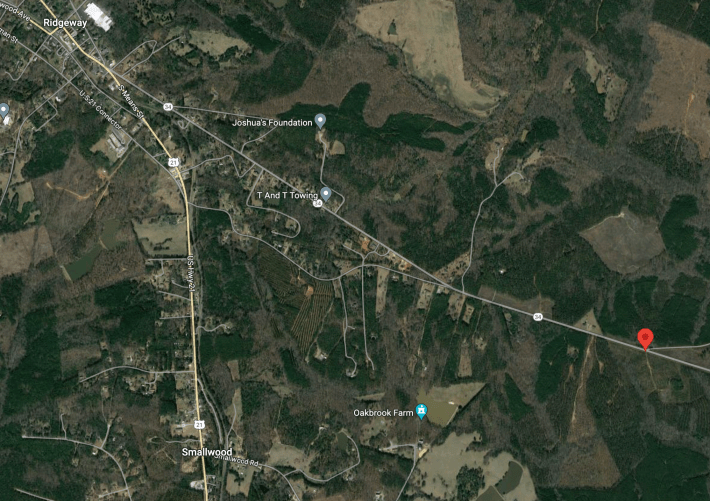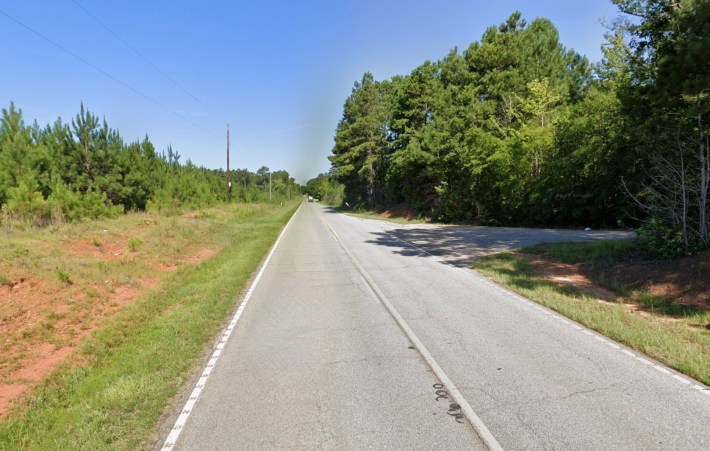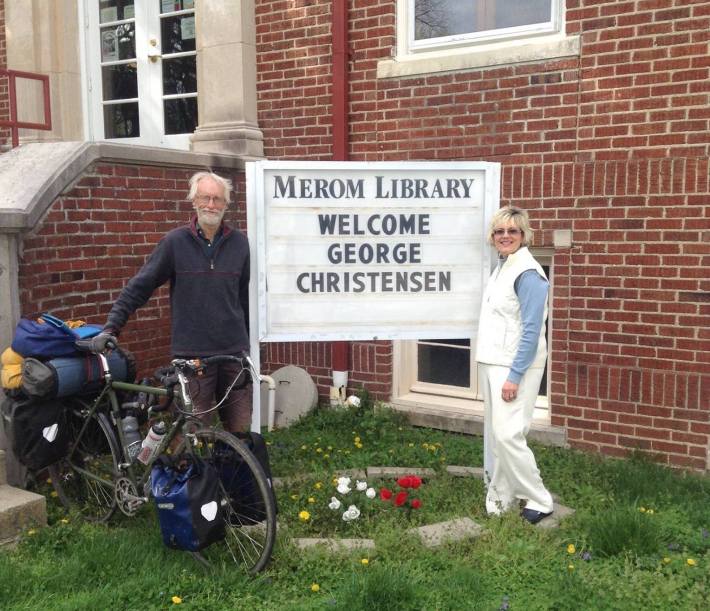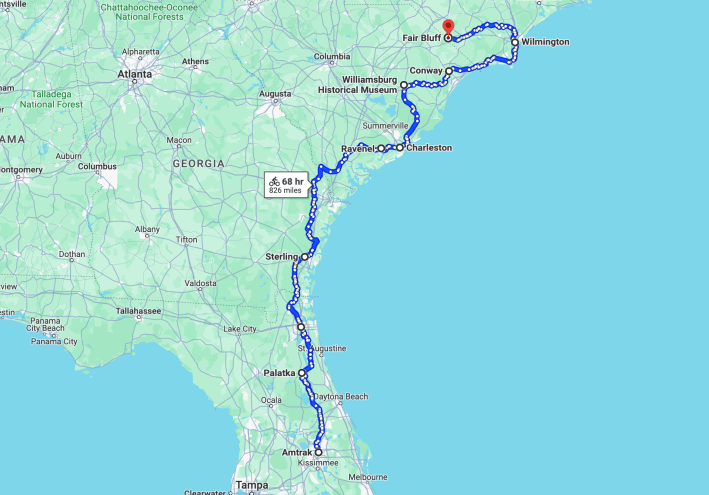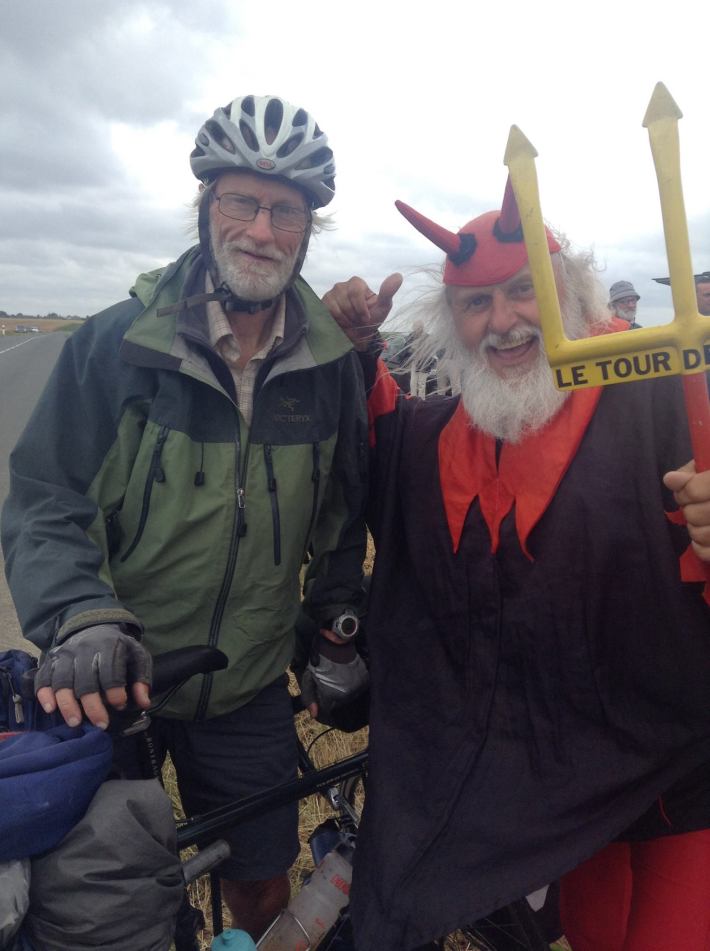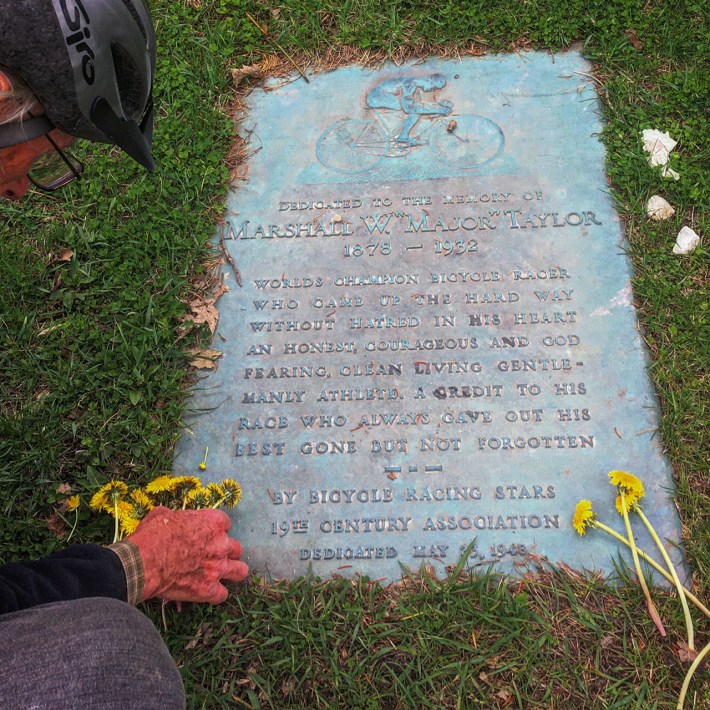John McPhee, the 93-year old prolific “New Yorker” writer with thirty books to his credit, mentions in one of his later books, “The Patch” from 2018, that the bicycle provided him with his chief means of exercise, and that he biked in excess of two thousand miles a year. I had read a bit of McPhee over the years, but didn’t recollect the bicycle slipping into any of what I had read. Since he generally personalizes his lengthy, wide-ranging pieces on individualists of the highest order, I assumed he must have alluded to the bicycle here and there. Thus I set out on a quest to read all of his books in search of further reference to the bicycle with hopes of discovering a discourse or two fully endorsing it as a means of conveyance that all should embrace.
I began with his first book published in 1965, “A Sense of Where You Are,” on the Princeton basketball star Bill Bradley, before he became a Rhodes Scholar and went on to the NBA and the US Senate. McPhee grew up in Princeton and attended the university and made it his home for the majority of his life. There is a Princeton connection to many of his articles and books. He was thirty-four when he wrote the profile for the “New Yorker” that became the book. He was just getting established at the magazine after several years at “Time,” where his work included cover stories on Sophia Loren, Richard Burton, Jackie Gleason, Barbara Streisand, and Joan Baez, while all the time vying for a position as staff writer at the “New Yorker,” something he aspired to since he was a teen.
Basketball was a natural subject for McPhee, as he’d been the captain of his high school team and a devoted athlete. He spent so much time playing sports growing up that he wondered how he ever got his school work done. It was in his blood, as his father was the physician for Princeton’s athletic teams and served in a similar capacity for the US Olympic team. His first story as a free-lancer for the “New Yorker” was about playing basketball after he graduated from Princeton for the University of Cambridge team against Her Majesty’s Royal Fusiliers.
Unfortunately, there was no mention of Bradley utilizing a bicycle nor of McPhee meeting up with Bradley via a bicycle. Nor does the bicycle make an appearance in his second book, “The Headmaster,” about the long-time headmaster of Deerfield Academy, a prep school in Massachusetts that McPhee attended for a year after graduating from Princeton High School at the urging of his mother to gain an extra year of maturity before going on to Princeton. If McPhee were the bicycle advocate I hoped he might be, he would surely have inserted the bicycle into this portrayal of life on the campus endorsing its utility and exalting in the freedom the bicycle allowed him in his dashes around campus.
It’s not until his last three books, that are reflections of a man in his eighties on his long writing career, does he reminisce about riding his bike as a youth to piano lessons and to his job in the biology department and elsewhere. He doesn't seem to have embraced the bike enough to ride upwards of 2,000 miles a year until he is well into his 60s. At the age of 68 he had a bad accident, tearing a rotator cuff that required months of rehab. In his later years he rode around the environs of Princeton with a variety of companions, the lacrosse coach, the basketball coach, a Washington Post writer and others. Golf wasn’t his sport, but passing the many golf courses in the area, he’d stop to pick up stray balls, once chased by a greenskeeper who objected to his scavenging, dashing off on his bicycle “at a speed I probably could not duplicate.”
His thoroughly researched articles are noted for their attention to detail, some relevant and some not so much so, such as mentioning that as he walked around the Metropolitan Museum of Art with its director Thomas Hoving, he glanced out a window facing Central Park and noticed two bicyclists riding side by side. At last, in this his fifth book, “A Roomful of Hovings,” the first of seven that were collections of his articles from the “New Yorker” rather than just the reprint of a single long article, he choose to sprinkle in some bicycling even though it was not integral to the story. The bicycle appears in the profile of Hoving, as Hoving was an ardent cyclist as a youth, working in a bike shop and being the ringleader of a bunch of teen cyclists who zipped around the town he grew up in. McPhee reports that Hoving’s house frequently had a cluster of bikes out front of pals who’d come by. When Hoving was the Parks Commissioner of New York, he advocated closing Central Park to motor vehicles on Sunday in favor of cyclists and proposed a bicycle and walking trail on the old Croton right-of-way in the Bronx.
The second piece in this collection is a several day canoe trip with Euell Gibbons, foraging for all their meals. Gibbons had achieved fame with his book “Stalking the Wild Asparagus.” McPhee politely observed that his interest in wild food, “suggests, but does not actually approach, madness.” Canoeing ranks right up there with basketball among McPhee’s passions, so he ardently persuaded Gibbons to go on a canoe trip with him despite his preference for simply foraging in his environs. In “Silk Parachute,” another collection of his articles, McPhee confessed, “To this day I do not feel complete or safe unless I am surrounded by the protective shape of a canoe,” words I wish he could have applied to the bicycle.
Several of his books include time spent paddling in Alaska and the northeast. Allusions to it can pop up any time. In his best-selling “Coming Into the Country,” his book on Alaska that garnered him more attention than any of his books, he makes the stark admission that he’d rather peel potatoes than go hiking, avoiding walking whenever possible, and that he has always had a predilection for canoeing. In “Draft No.4” he wrote, “I grew up in canoes on northern lakes and forest rivers.” It was by far his favorite activity at summer camp.
His twelfth book, “The Survival of the Bark Canoe,” is largely about a canoe trip with a young man who fashions canoes from the bark of birch trees as Native Americans once did. McPhee complained about paddling into headwinds. If he’d been a cyclist of any sort at the time, he would have launched into a tirade about headwinds being the bane of all cyclists. The world of cycling is at a loss for McPhee not embracing cycling until later in life, for if it had been an early passion, he doubtlessly would have found a way to make a book of it, as he did with basketball and canoeing and tennis. Bicycle aficionados just have to be satisfied with the little snippets he offers.
One might think the self-sufficient, minimalist Gibbons would have an intimate relationship with the bike, but there is not even a hint of it. Since McPhee fully immerses himself into the lives of his subjects, spending days and days with them, one can be sure the bicycle was not part of Gibbon’s simple and basic life. McPhee’s profiles invariably elevate his subjects to characters to admire if not envy. He’s not blind to a flaw or two, but gives them no emphasis, just dropping in an element that slightly undermines one’s stature, such as Gibbons lighting a cigarette after a meal. Of David Brower, ardent environmentalist and long-time head of the Sierra Club, who is the lead character in “Encounters with the Archdruid,” McPhee wrote, “He was feisty, heaven knew. And arrogant possibly. And relentless, certainly. And above all, effective.”
He had a golden opportunity to feature the bicycle in his seventeenth book, “La Place de la Concorde Suisse,” about the Swiss Army, which all Swiss citizens serve in on a continual basis, full-time, then part-time. It is said, “Switzerland does not have an army. Switzerland is an army.” There are three battalions of cyclists, but he gave them no mind, preferring to attach himself to other regiments when they reported for a few weeks of training. If he were the bicyclist I hoped he might be, he would have made a cycling battalion the focus of this book. There are a couple of mentions of stray, civilian cyclists passing by as in “A Roomful of Hovings,” but far from the focus they could have been.
He could have also made a strong argument for the value of the bicycle in “The Crofter and the Laird,” a book about the tiny Scottish island of Colonsay (sixteen square miles with a population of around one hundred) where his forebears lived, and he described as “less like a small town than like a large lifeboat.” He spent several months there with his wife and four young daughters getting to know the place. The automobile was not introduced to the island until 1947, but he says nothing of the bicycle, other than of a salesman on a bicycle loaded with goods who pays periodic visits to the island. McPhee ought to have had a bike for his forays all over the island getting to know all its inhabitants.
Similar to the books on Hoving and Switzerland, the bicycle momentarily pops up in “Assembling California,” the fourth in his set of books on geology along with “Basin and Range,” “In Suspect Terrain,” and “Rising from the Plains” that were combined into the 696-page book, “The Annals of the Former World,” that earned him the Pulitzer Prize and is his lone book with an index. When he is at the summit of Donner Pass in California, a cyclist standing on the pedals is climbing towards it, “scarcely puffing.” He goes over, sits down and begins his descent, all that McPhee has to say of him. Likewise he grants a single sentence to the multitude of cyclists in the college town of Davis, saying there may be more than in Shanghai. In the several pages he devotes to the devastating 1989 earthquake that occurred during Game Three of the World Series being played in San Francisco, he mentions cyclists falling to the street and another feeling the ground move under his feet and a bike mechanic who called the earthquake “my best near-death experience.”
All these mere mentions without any elaboration, any of which could have launched him into a lengthy digression, as he is prone to do, made it clear that McPhee hadn't yet been converted to full-fledged cyclist even in his early sixties. His bicycle didn’t become an intimate companion until later, when he could no longer exert himself at sports that involved running. William Howarth in his introduction to the first of the two “John McPhee Readers” reveals that McPhee was given to “hard physical exercise,” but didn’t include cycling among those activities, just tennis, squash and basketball. The pair of “Readers” are wholly comprised of excerpts from his previous books, and don’t count as being among his thirty books, as can also be said of “Annals of the Former World,” (though it has an extra forty-page chapter on the geology of Nebraska), and several other books that combine material from previous books—books on tennis and Alaska and islands and geology for fanatics who want an extra McPhee or two on their bookshelf. A lengthy piece in “Table of Contents” on doctors in family practice was also later published as a stand alone book “Heirs of General Practice.” These extra books bring his total to forty-one.
Though all my reading wasn’t rewarded with any bicycle manifestos to hang on my wall, there wasn’t a book I wasn’t happy to have read. They were all enlightening and inspiring and entertaining. One truly gets to know his countless subjects—geologists, a long-haul trucker, a Wimbledon groundskeeper, an expert in Russian art, a nuclear physicist, a host of Alaskans, a crew on a freighter, a bush pilot with the same name as him, a developer, a master chef and on and on. One has the impression that McPhee formed a strong friendship with each of the many people he hung out with for prolonged periods of time before writing about them. He doesn’t merely interview them, he has conversations with them that go on for days. It is McPhee’s good fortune to have spent so much time with the many fascinating figures he finds. And it is his charm to elevate just about anyone he writes about into someone the reader would want to embrace. He had me imagining how he could elevate friends of mine I very much andmire into figures of even greater esteem if given the McPhee treatment.
His meticulous prose, which he reads sentence by sentence to his wife before turning it over to an editor, is spiced with a good deal of humor. There isn’t a book without a laugh line or two, whether it’s inserting the bumper sticker on a pickup truck that cuts him off (Don’t like my driving—dial 1-800-Eat-Shit) or a sign in the office of a plutonium storage facility in New York that reads “Cows may come and cows may go, but the bull in this place goes on forever,” or observing that striped lines on the road in Nevada simulating cattle guards indicate that cattle must have IQs in the single digits, “slightly lower than the national average.”
His humor also extends into highly exaggerated metaphors. The notoriously attentive “New Yorker” fact-checkers let stand his assertion that enough driftwood collects on the shores of Colonsay to build a roof over Scotland. One genuine slip was letting McPhee label two different roadcuts, geologist’s best friends, as being the largest on interstate 80 between New York and California. He credits a 250-foot roadcut in Pennsylvania when traveling with a geologist in the book “In Suspect Terrain” for being the largest. It was so impressive that the geologist Anita Harris gushed “Holy Toledo. Look at that son-of-a-bitch.” In “Assembling California” he comes upon a roadcut of 306-feet and calls it the largest on Interstate 80 without acknowledging he’d gotten it wrong in his previous book.
He used hyperbole to emphasize the vastness of Alaska, surmising that if anyone could figure out how to steal Italy, Alaska would be a place to hide it. Discussing the vast coal reserves of the US, he pointed out there is also enough peat in the US to heat Ireland for a thousand years. When in the Cascades he wrote that enough snow and rain fell there to irrigate Libya. He also strove for a chuckle when he observed that an initiative in Switzerland to abolish its army was as likely to pass as an initiative to abolish chocolate. His word play also aims to amuse, as when he wrote a family of musicians driving out to California doremifasoled up a mountain. He invoked Hiawatha when writing of his favorite canoe, saying it was so perfect he wouldn’t dare altering it in any way, “even with the permission of Hiawatha.” Lazarus turns up in “The Deltoid Pumpkin Seed,” the tale of an ill-fated attempt to design a dirigible for transporting whole trucks and huge quantities of goods. When the SEC withdrew permission for it to sell shares in the enterprise McPhee wrote “Lazarus at his worst had a stronger pulse.”
His precise and astute descriptions of his subjects often includes a comment on their weight avoiding the obvious fat or skinny. He described the Princeton geologist Kenneth Deffeyes as a big man with a tenured waistline who even as a student was not hurting for weight. He commented of John Sutter, a key figure of the California gold rush, that he had a broad-brimmed hat and an even broader belly. President Theodore Roosevelt makes an appearance in “Rising from the Plains” at a time when “his paunch was under control.” Of truckers he wrote, “the bellies they carry are in the conversation with hot-air balloons.” A chef and his wife have “eaten a little too well, but neither is falling down fat.” He made the observation that a security guard with a large belly “appeared to be the sort of man who could run a hundred yards in four minutes.” But being fat isn’t all bad. He thought extra weight made someone seem trustworthy.
He finds others too thin, describing one as “somewhat below the threshold of slender.” Another is “slim to the point of being weightless.” And another is “slender to the point of endangerment.” He calls one of the crew members on the freighter he spent several weeks on “weightless.” And that food was wasted on him. He spent enough time with the tennis player Clark Graebner to observe that his wife, a former top tennis player herself, was “constantly starving herself.” And Graebner’s mother wasn’t much better, as she was a “dieter of fearful discipline.”
He comments on people’s smiles as well. He wrote of someone who had a ready smile, that it wasn’t quite ready at the moment he was writing of. Someone else without a smile was a young representative of PETA, who had a “firmly downturned mouth that may never have smiled.” He was pleased though with the person who had a “constant knowledgeable smile.” In “Oranges” he called the smile of the head of Minute Maid “benign,” suggesting that “when he was a small boy he dreamed of having all the Coca-cola he could drink and that the dream came true.”
His writing is particularly enlivened by his descriptions of mustaches, putting as much effort in describing them as other authors do of sunrises and sunsets. He refers to himself as the “New Yorker’s” nonfiction mustache specialist and goes to considerable effort to put an original label on a mustache whether with a seldom used adjective such as “tetragrammatonic,” “trapezoidal,” “equanimous,” or some metaphor, such as “an airfoil that would impress the Wright Brothers.” He explained, “Writing has to be fun at least once in a pale blue moon.” Elsewhere he observed, “Writers come in two principle categories, those who are overtly insecure and those who are covertly insecure,” without saying which he is.
He puts less effort in describing beards, though they turn up almost as often as mustaches. He mentions his own from time-to-time, though we never see it, as none of his books bear a photo of him, though he can be seen on the cover of a biography written about him in 1997 after he’d published twenty-three books. It was part of the Twayne’s United State Authors series. His reticence to offer a photo of himself does not preclude him from revealing many strands of his personality. He considers himself a “registered curmudgeon” with an unwavering anxiety that disaster lurks everywhere, so much so that he calls himself “an advanced, thousand-deaths coward with oak-leaf clusters.” Elsewhere, he elaborated, “I have a lifelong tendency to panic. Almost anything will panic me—health, money, working with words.”
Preoccupations whirling in his head preclude him from getting much more than five hours of sleep except when he is camping and can sleep for up to nine hours. He did overcome a fear of flying when a train he was traveling on to Seattle was snowed in crossing Minnesota and lost the power to generate heat. He sprinkles in here and there various personal traits—he’s left-handed, has never been able to float, is short, doesn’t wear a watch, doesn’t text-message, has a car that has “a tendency to ignore stop signs,” always has a bandanna in his pocket. When he used the bandanna to wipe some coal dust from his face, he asked the geologist he was accompanying if he’d gotten it all. She replied, “Good enough for government work.” He also much prefers freshly squeezed orange juice to concentrate and had a most difficult time finding his preference during his time in Florida researching “Oranges.”
His fascination with mustaches is well known enough that if one googles “John McPhee and the mustache” one is taken to the First Things website that lists twenty-one of his descriptions. It is far from complete, so I offer here a comprehensive list in chronological order of the books they appeared in (twenty-one of his thirty books, one less than books with a bicycle mention), a few of which are unaccompanied by an adjective:
The Headmaster: walrus
Oranges: modest
tousled
well-cared-for
A Roomful of Hovings: sincere and reassuring, being just halfway between a handlebar and a pencilline
Levels of the Game: small
The Crofter and the Land: had a mustache
mustache that suggests a wealth of experience
The Deltoid Pumpkin Seed: wicked
The Survival of the Bark Canoe: trapper’s
modest
Coming into the Country: mustache akimbo
handlebar
wings of the mustache
billowing glory of a mustache
shadows come into his mustache, which turns into an iron brush
19th century drooping gold mustache
thin, Byzantine
a smile flapping the wings of his mustache
Giving Good Weight: a beard that comes and goes. When it is gone, as now, he retains not only a mustache but also a pair of front burns: a couple of pelts that descend from either end of the mustache and pass quite close to his mouth on their way to his chin
black
an aggressive mustache concentrated like a grenade
La Place de la Concorde: mustache with short handlebars
large, black
gray handlebar
dark
Table of Contents: blond
seems medical in that it spreads flat beyond the corners of his mouth and suggests no prognosis, positive or negative
woodman’s ample
soothing
analgesic
sandy
timber’s cruiser’s guiless
Rising from the Plains: “A mustache grew over his mouth, like willows bending over a brook”. (quoted from a woman homesteader’s journal)
His mustache was an airfoil with a fineness ratio that must have impressed the Wright Brothers (President Theodore Roosevelt)
The Control of Nature: his low-sill mustache looked French
with a mustache
Looking for a Ship: sportive
white
equitable
competent
Assembling California: tetragrammatonic
The Ransom of Russian Art: grand obodene
Guinness Book mustache like a barrel on his lip
thick eyebrows merging with his mustache
storybook
great billow of lip hair
huge
voice filtering through the mustache
adding blue or magenta mustaches (to Soviet officials on black-and-white posters)
Irons in the Fire: trim, trapezoidal
dark and radial
The Founding Fish: drooping diehedral
sandy, medical in nature
had a mustache and dark thinning hair
thin alchemical
inquiring
equanimous
Uncommon Carriers: dark and gyroscopic
sincere
precise, navigational
amiable
mustaches large enough to resemble the lower halves of crossing signs
bilateral semaphore
Draft No. 4: sincere
“New Yorker’s” nonfiction mustache specialist
no-nonsense, gyroscopic, timber-cruiser’s guiless, soothing, medical
Guinness Book, like a barrel on his lip
tetragrammatonic
frank
fluorescent, distinguished
The Patch: ample sort of mustache that all creation, even a bird, would trust
on and off he had a mustache
handlebar
